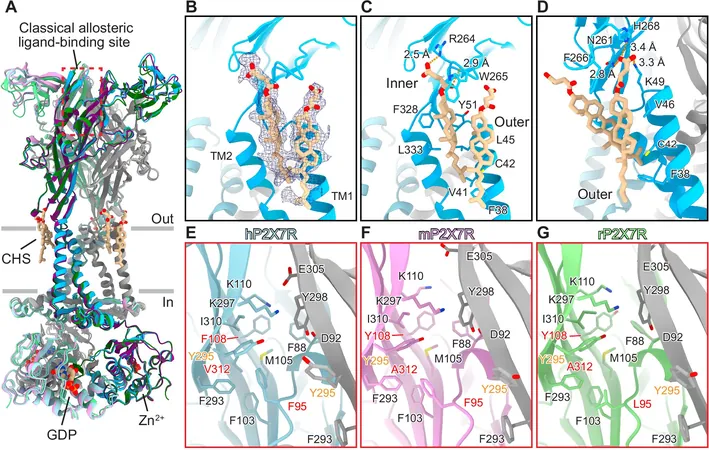
Revolutionizing Prediction: New Statistical Tool Unveiled!
2025-09-11
Author: Daniel
A groundbreaking research team from Lehigh University, led by statistician Taeho Kim, has unveiled a powerful new statistical tool that promises to transform prediction methods in critical areas like health, biology, and social sciences.
Dubbed the Maximum Agreement Linear Predictor (MALP), this innovative approach focuses on achieving heightened accuracy by optimizing the concordance correlation coefficient (CCC). This metric measures how closely pairs of observations align with a 45-degree line on a scatter plot, making it a game-changer in predicting outcomes.
Traditional prediction techniques, such as the commonly used least-squares method, primarily focus on minimizing average errors. While effective, they often neglect the importance of precise alignment between predicted and actual values. Kim points out that sometimes we need our predictions to not only be close but to be in the highest agreement with real values.
Kim elaborates, "The challenge is defining agreement in a scientifically meaningful way. A core component is assessing how well our predictions align with a 45-degree line on a scatter plot." While Pearson's correlation coefficient is often the go-to for establishing linear relationships, it doesn't focus specifically on this crucial alignment.
Instead, the MALP targets the 45-degree relationship directly, ensuring that predictions are tailored to better reflect actual outcomes. This approach was rigorously tested using both simulated data and real-world scenarios, including eye scans and body fat measurements.
In one eye scan study comparing the older Stratus OCT and newer Cirrus OCT devices, MALP proved its worth by providing predictions that closely matched the Stratus readings, outshining the least-squares method in terms of agreement, although the latter performed marginally better in error minimization.
Similarly, in assessing body fat percentages from 252 adults, MALP again showcased its strength, yielding results more in line with actual measurements compared to traditional methods. The findings illustrate the fine balance between achieving precise agreement and minimizing average error.
As researchers look to the future, Kim and his team envision extending MALP beyond linear predictors to further enhance its application across various fields, potentially leading to what they term the Maximum Agreement Predictor.
The implications of this research are monumental—offering a sophisticated tool for data scientists and researchers aiming to refine their predictive models. Whether in medicine, public health, or engineering, MALP sets the stage for a new era in statistical forecasting, where precision and agreement come together for unparalleled accuracy.
Kim sums it up aptly: "We need to investigate further. While we are starting with linear predictors, the future holds possibilities for broader applications. The aim is clear: we want to fully align our predictions with reality."



 Brasil (PT)
Brasil (PT)
 Canada (EN)
Canada (EN)
 Chile (ES)
Chile (ES)
 Česko (CS)
Česko (CS)
 대한민국 (KO)
대한민국 (KO)
 España (ES)
España (ES)
 France (FR)
France (FR)
 Hong Kong (EN)
Hong Kong (EN)
 Italia (IT)
Italia (IT)
 日本 (JA)
日本 (JA)
 Magyarország (HU)
Magyarország (HU)
 Norge (NO)
Norge (NO)
 Polska (PL)
Polska (PL)
 Schweiz (DE)
Schweiz (DE)
 Singapore (EN)
Singapore (EN)
 Sverige (SV)
Sverige (SV)
 Suomi (FI)
Suomi (FI)
 Türkiye (TR)
Türkiye (TR)
 الإمارات العربية المتحدة (AR)
الإمارات العربية المتحدة (AR)